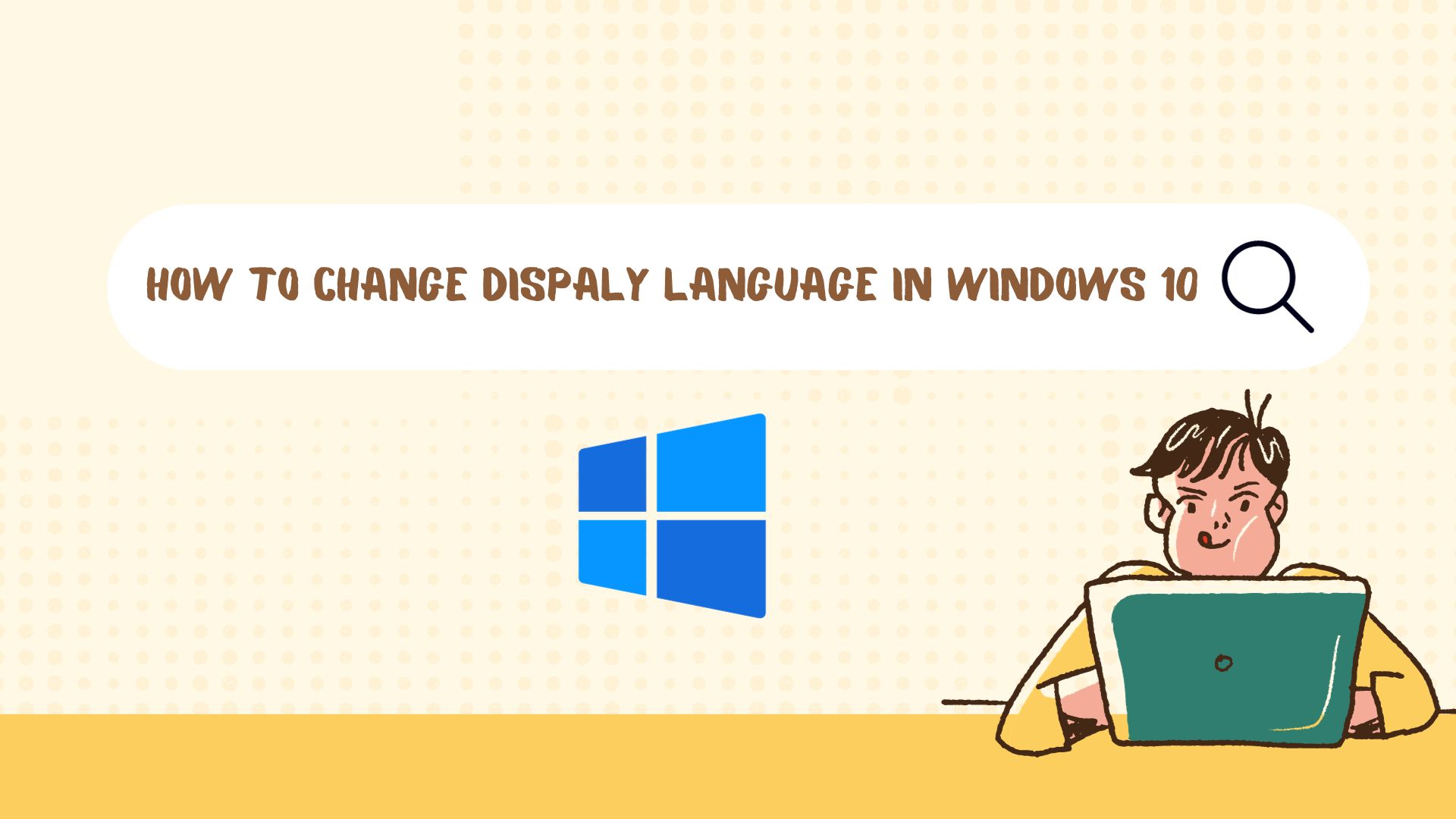Changing the display language in Windows 10 is straightforward. Here are the steps:
Table of contents
Steps to Change Display Language in Windows 10:
to change the display language, first you need install the language pack. If you installed already skip the step.
Note: If you installed single language edition. you will receive an “Only one language pack allowed” or “Your Windows license supports only one display language” message when trying to change the display language.
Install a Language in Windows 10:
1. Press Windows + I to open the “Settings” window.

2. Click on “Time & Language”.
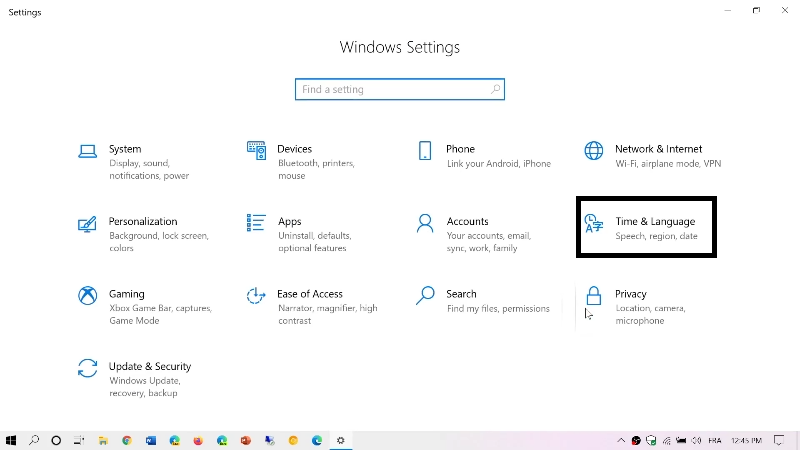
3. Select “language” on the left.
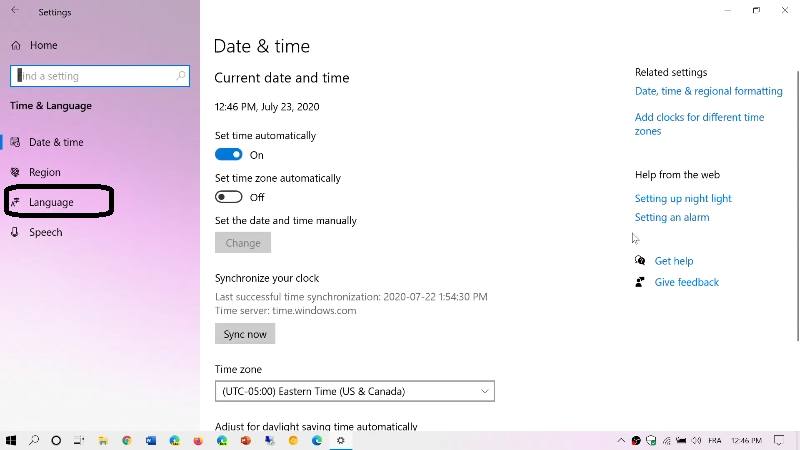
4. Click “Add a language” on the right.
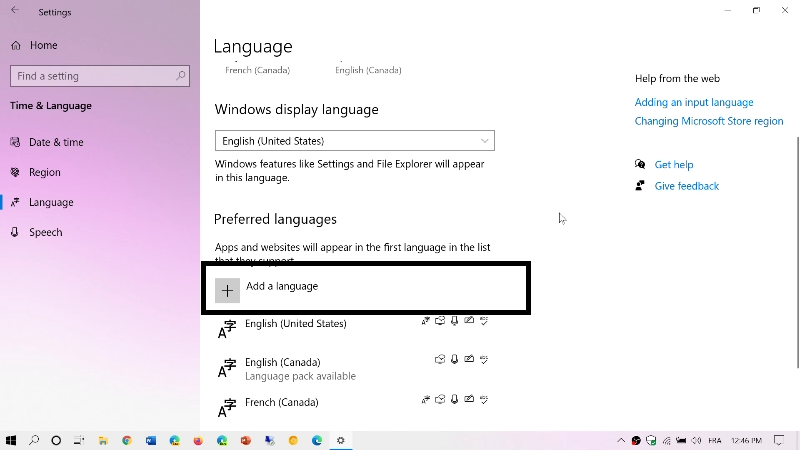
5. Choose the language you want to install from the list.
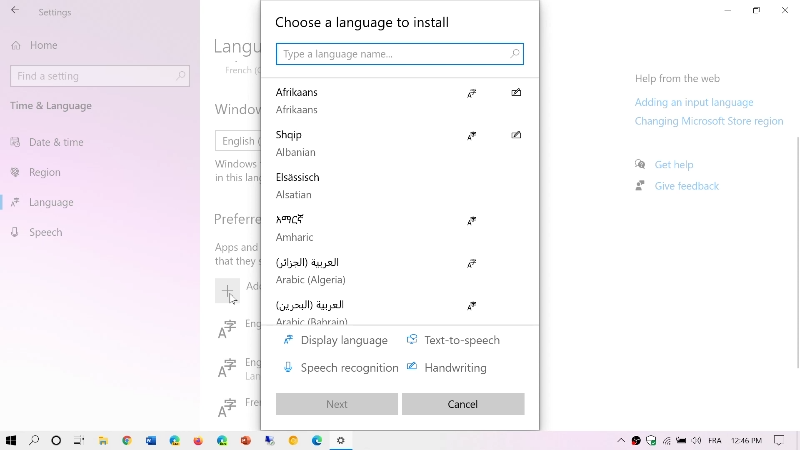
6. Select Language and click next and then click “install” to download the language pack and keyboard for that language.
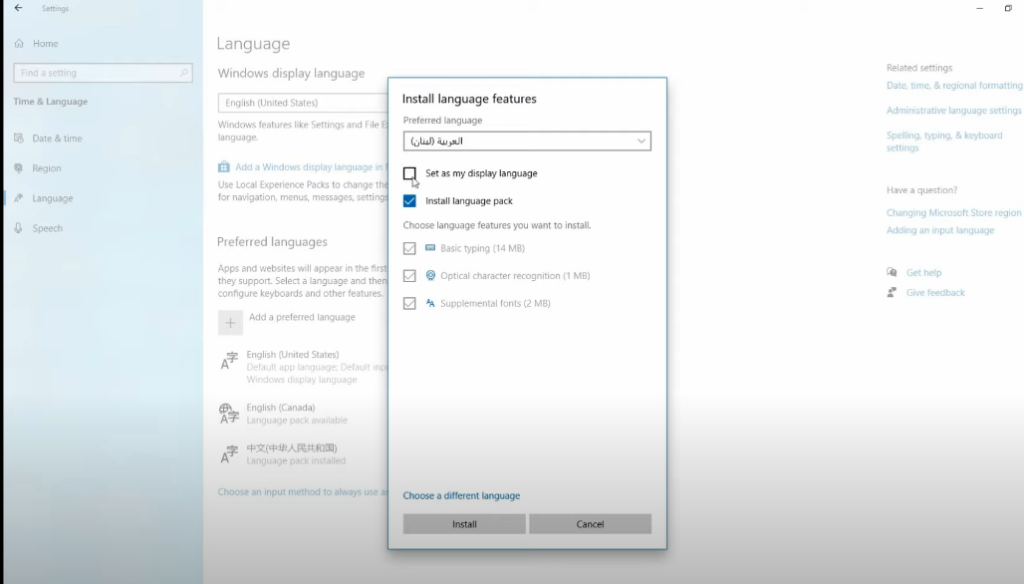
7. Once you have installed language it will show in windows display language section.
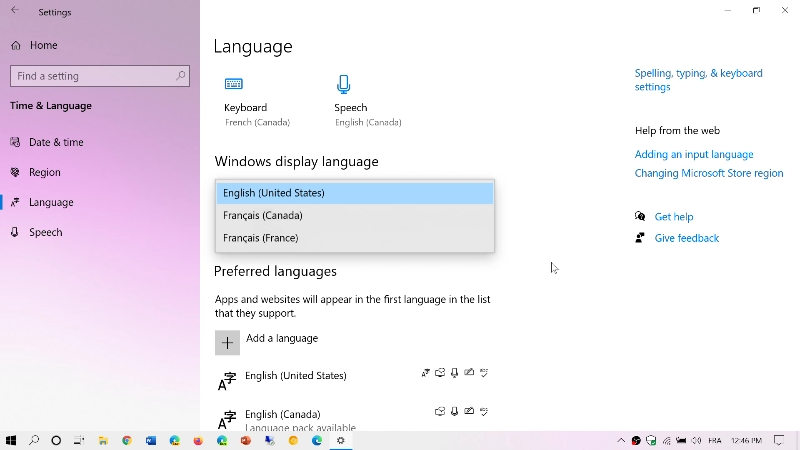
Change the Display Language on Windows 10:
To change the language of the user account you are currently using:
1. Return to the “Time & Language” Settings page.

2. Click language then select language in choose windows display language option

3. Sign out of and back into Windows, and your new display language will be set.
4. If you want to change the language of another user account:
5. Sign into that account first.
6. You can set a different language for each user account.
Note: If you are using multiple users. Sign into Windows 10 using an administrative account to install the language pack, Local user does not have permissions to install it.
Steps to Change Display Language in Windows 10 Using PowerShell
Steps to Install a Language in Windows 10 Using PowerShell:
- Open Windows PowerShell with administrative privileges.
- Use the following command to initiate the language module:
Install-Language - Type in the associated language tag that you want to install and hit Enter.
For example, if you want to install the English language pack, use the following command:
Install-Language -Language en-USThis will download and install the specified language pack and additional components from Microsoft servers. Remember that the LanguagePackManagement module is currently available only in Windows desktop versions and not on Windows Server 2022/2019.
skip this step if you have already installed language pack.
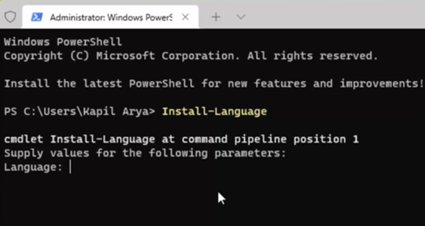
Here’s a list of available language packs for Windows:
- Arabic (Saudi Arabia) –
ar-SA - Bangla (Bangladesh) –
bn-BD - Bangla (India) –
bn-IN - Czech (Czech Republic) –
cs-CZ - Danish (Denmark) –
da-DK - Austrian German –
de-AT - “Swiss” German –
de-CH - Standard German –
de-DE - Modern Greek –
el-GR - Australian English –
en-AU - Canadian English –
en-CA - British English –
en-GB - Irish English –
en-IE - Indian English –
en-IN - New Zealand English –
en-NZ - US English –
en-US - English (South Africa) –
en-ZA - Argentine Spanish –
es-AR - Chilean Spanish –
es-CL - Colombian Spanish –
es-CO - Castilian Spanish (Central-Northern Spain) –
es-ES - Mexican Spanish –
es-MX - American Spanish –
es-US - Finnish (Finland) –
fi-FI - Belgian French –
fr-BE - Canadian French –
fr-CA - “Swiss” French –
fr-CH - Standard French (France) –
fr-FR - Hebrew (Israel) –
he-IL - Hindi (India) –
hi-IN - Hungarian (Hungary) –
hu-HU - Indonesian (Indonesia) –
id-ID - “Swiss” Italian –
it-CH - Standard Italian (Italy) –
it-IT
You can find the language pack codes in office website: Available Language Packs for Windows
Feel free to choose the language that suits your needs!
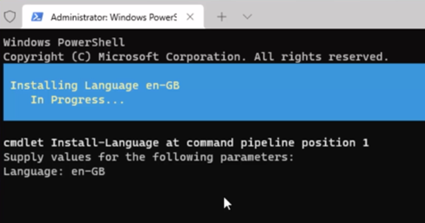
After language installed follow the below steps to change the display language
Change Display Language in PowerShell
1. Open PowerShell with administrative rights.
2. Use the following commands to set the desired display language (replace en-US with the language/locale you want):
Set-Culture en-US
Set-WinSystemLocale -SystemLocale en-US
Set-WinUILanguageOverride -Language en-US
Set-WinUserLanguageList en-US -Force
Set-WinHomeLocation -GeoId 244
shutdown -r;exit- Set-Culture en-US: Sets the default system culture to English (United States).
- Set-WinSystemLocale -SystemLocale en-US: Sets the system locale to English (United States).
- Set-WinUILanguageOverride -Language en-US: Overrides the user interface language to English (United States).
- Set-WinUserLanguageList en-US -Force: Sets the user language list to only include English (United States) and forces the change.
- Set-WinHomeLocation -GeoId 244: Sets the home location to the specified GeoID, which in this case is 244.
- shutdown -r;exit: Initiates a system restart (-r), and then exits the PowerShell session.
Please note that making changes to language and regional settings can affect the user experience, and restarting the system is necessary for some changes to take effect.
🌟 We value your opinion! 🌟
Hey there, fantastic readers! 👋 We hope you enjoyed our latest blog post. Your feedback is incredibly important to us as we strive to create content that resonates with you. 📝
We’d love to hear your thoughts! What topics are you interested in? Is there specific content you’d like to see more of? Your input guides us in tailoring our future posts to meet your interests and needs.
Feel free to drop a comment below and share your valuable insights. Your feedback fuels our inspiration! 🚀
Thank you for being a part of our community! 🌈 #CommunityFeedback #ContentWishlist #ShareYourThoughts
